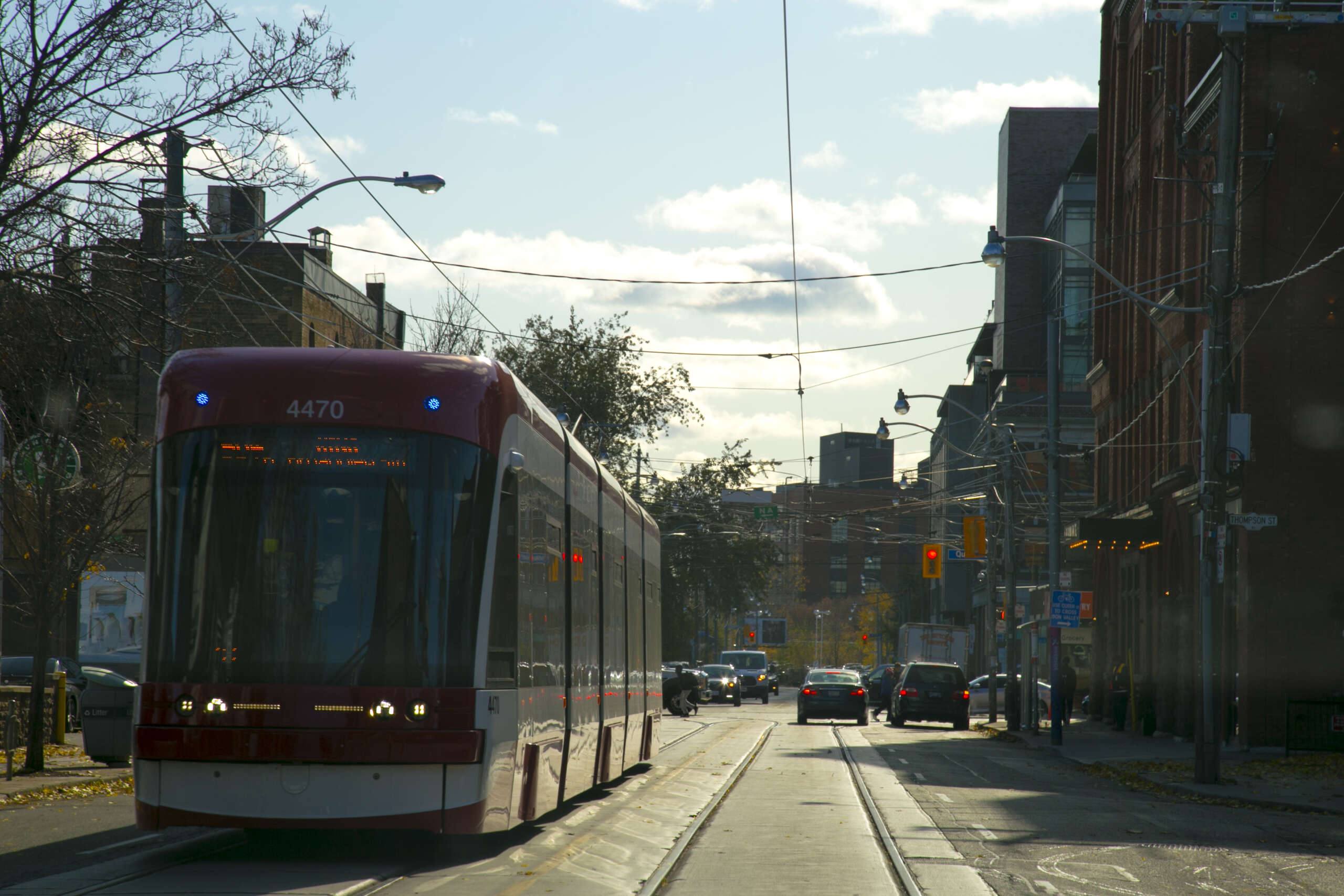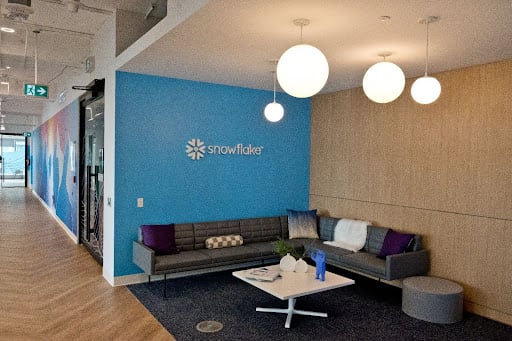We’re excited to share our next entry in our blog series on EVs and public transit, in the form of a question and answer from one of the top electric vehicle bus manufacturers in North America, Proterra, Inc.
Proterra is one of several companies engaged with the TTC on a public transit pilot project, and embodies the scale of opportunity within the Toronto Region and Canada in terms of electric vehicles and public transit. We’ve greatly enjoyed supporting Proterra’s efforts in the Toronto Region, and John Walsh, Senior Vice President at Proterra kindly took the time to share his thoughts – enjoy!
From a market perspective, over the past couple years the momentum on electric buses seems to be gaining speed, with an increasing number of North American transit agencies running pilot projects and putting electric buses into service. Why do you think electric buses are having a moment and gaining traction in public transit systems in the U.S. and Canada?
New technology is making the promise of fully-electric fleets a reality. Today, transitioning to clean transportation is no longer just the right thing to do for our health and environment, it’s also the smart thing to do for our communities.

Every time a Proterra battery- electric bus with zero tailpipe emissions replaces a diesel bus, 230,000 pounds of greenhouse gases are avoided along with other emissions known to harm human health. Battery-electric buses offer a greater total cost of ownership, the lowest operating costs, and the least cost volatility when compared to internal combustion engines.
Take Edmonton as an example. This summer, Proterra along with our partners Edmonton Transit Service, or ETS, unveiled the first 21 Proterra battery-electric buses, one of the largest purchases of electric buses in Canadian history. It represented the first deployment to implement in-depot overhead charging in North America, along with having the most energy storage on any 40-foot electric bus. The ETS deployment showcases just how we can successfully implement an electric bus fleet and charging infrastructure for current fleet needs, as well as plan for expansion in the near future.
We are excited to partner with leading transit agencies from Edmonton to Toronto to accelerate the transition to 100 percent clean transportation for all.
Aside from electric buses, we know that a great deal of infrastructure that supports these vehicles needs to be modified and in many cases, built entirely new. What do you see as critical pieces of technology and infrastructure that accompany electric buses?
As more cities, states, schools, airports, and private commercial operators move to zero-emission transportation, reliable, affordable high-power charging infrastructure is critical to help power our electric vehicle fleets of tomorrow. That’s why at Proterra, we’re investing in charging infrastructure and energy fleet solutions today that play such a critical role in achieving these important electrification goals.
Proterra recently introduced our next generation charging infrastructure solution, providing transit agencies’ fleet operators with a comprehensive set of charging solutions they need to scale their fleets of electric vehicles. For large fleets of vehicles, where customers need to address the challenge of charging dozens or hundreds of vehicles in a single fleet yard, our new charging systems can be configured with up to 1.5 megawatts to power up to 20 vehicles simultaneously.
Fleet electrification is a complex challenge for many transit agencies. We’ve built a team of experts dedicated to taking customers through the process of installing charging infrastructure and working with their local utility, with extensive experience building our charging system for electric vehicle fleets. Proterra ensures that the infrastructure installation plans also take into consideration the need to serve a growing electric bus fleet, in order to reduce the future cost of charging infrastructure as the customer scales their zero-emission fleet. Demand charges for power consumption from utilities can also cause a customer’s electricity bill to increase significantly. Proterra works with the customer’s utility to get the best rates for the customer, and more utilities are introducing special rates specifically to eliminate demand charges for EV fleets.
Through next-generation charging infrastructure smart energy management, we can flatten the demand curve for customers and help communities in Canada and across North America power 100 percent clean transportation fleets.
Looking north to the Toronto Region, being one of the largest metro regions in North America, public transit is critical to our continued growth. How do you see the public transit infrastructure in Toronto and other Canadian urban centres, and the opportunities for Proterra and other international electric bus companies to further engage in this market?
Canada is a leading example of the transition to 100 percent clean transportation. Proterra is proud to support the Toronto Transit Commission (TTC), which maintains the largest fleet of electric buses in North America. Building on the innovative spirit and leadership of agencies like TTC, Canada is aiming to retain 5,000 battery-electric buses over the next five years and have all new buses by electric by 2040; and cities like Montreal and Vancouver are aiming to achieve 100 percent zero-emission transportation fleets by 2040 and 2050, respectively.
Just a few short years ago, the question many were asking was whether the transit market will even move toward electrification. That question has been answered. The transition is underway.
Proterra’s battery and bus manufacturing is currently focused in the United States. With your growing international ambitions, what elements do you envision as essential to support Proterra’s future production needs (i.e. skilled workforce, resilient supply chain, proximity to strategic transit markets)?
What started a decade ago with the delivery of the first Proterra battery-electric transit buses has grown into a new-era for zero-emission transportation as communities switch to 100 percent clean, zero-emission fleets. Canada is poised to be a global leader in this emerging market, bringing the next wave of transit innovation directly to communities. At Proterra, we look forward to delivering clean, quiet transportation to communities across the country.
As large transit agencies like the Toronto Transit Commission scale their electric bus fleets, do you see advanced technologies supporting the deployment, operation, and lifecycle of such a large number of vehicles (i.e. autonomous / connected tech, new software opportunities, different vehicle models, and battery recycling)?
Building battery-electric vehicles is hard work. With more than 500 Proterra vehicles on the road and 16 million miles driven by our fleet of buses, we’ve come a long way in our journey to provide clean, quiet transportation for all.
We’ve also gained valuable insights along the way and we’re applying these learnings to better serve our customers today and tomorrow. This includes introducing new products to help our customers meet their current needs and plan for the future.
In September, Proterra launched our newest (and fifth-generation) battery-electric transit bus, which was built from the ground-up to be electric and informed by our learnings from the past decade of deliveries. Designed for full-fleet electrification, the Proterra ZX5 battery-electric transit bus offers unmatched drive range, faster acceleration and greater horsepower, and industry-leading hill-climbing abilities to tackle steep terrain.
About Proterra’s Electric Buses
Successfully transitioning to 100 percent battery-electric buses and commercial fleets also requires a safe, reliable, and high-performing battery. That’s why we’re introducing new battery packs featuring next-generation battery cell technology, which will improve on Proterra’s industry-leading energy systems with greater energy storage capacity and higher power density to enable increased range and faster charge times. Since 2016, the Proterra and LG engineering teams have been collaborating to maximize cell performance to meet the stringent requirements of commercial vehicle markets. Proterra’s new battery-electric transit vehicle, the Proterra ZX5, can now be equipped with 675 kWh of energy, the most energy storage of any 40-foot electric bus available in the market today.
Thank you, John for the conversation! We look forward to following Proterra’s continued growth in Canada!
Stay tuned for more conversations on this topic and opportunities to invest and expand your business within the Toronto Region.




